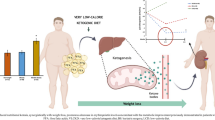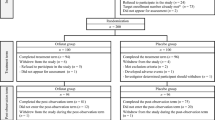Abstract
As a complicated metabolic disease, diabetes mellitus causes irreparable microvascular and macrovascular complications for the affected person. In this regard, omentin-1 is an adipokine which is generally produced by omental fat tissue, and its levels are in connection with diabetes and its complications. In this study, the influence of evening primrose oil on the serum levels of omentin-1 and some of biochemical parameters in the diabetic rat model were investigated. In total, 24 healthy Wistar Albino male rats with a weight range of 200–250 g were classified into 4 groups of 6: First group: control normal, second group: EPO (evening primrose oil), third group: diabetic, fourth group: diabetic+EPO. After 20 days, serum samples were taken, and the required parameters were measured and analyzed. ELISA was utilized to determining serum omentin-1 levels. Also, the levels of biochemical factors TG, CHOL, HDL, LDL, FBS, and liver enzymes ALP, GGT, ALT, AST, and LDH were measured. There was a significant decrease in serum concentrations of omentin-1 in diabetic rats in comparison with the normal control group and EPO group. After using EPO, serum levels of omentin-1 increased in the diabetic+EPO group in comparison with the diabetic control group. Moreover, FBS and TG, ALP, ALT, and GGT were increased in diabetic rats. After using EPO, the levels of these parameters decreased significantly in the diabetic+EPO group compared to the diabetic control group. Based on the results, it can be concluded that EPO can be a potential supplement to control diabetes and reduce blood sugar and diabetes-induced complications.
Graphical abstract




Similar content being viewed by others
Data availability
The authors confirm that the data supporting the findings of this study are available within the paper.
Code availability
Not applicable.
References
Abd El Dayem SM, Battah AA, El Shehaby A (2015) Cardiac affection in type 1 diabetic patients in relation to omentin. Open Access Maced J Med Sci 3(4):699
Abdulridha MK, Hussain MS, Khudhair MS (2017) Study effect of evening primrose oil supplement on type 2 diabetes mellitus - associated metabolic parameters. Pharm Biosci J 5(2):17–23
Akbari A, Tadibi V, Behpour N (2019) The effect of stevia extract consumption and aerobic exercise on serum omentin-1 and lipid profile in STZ induced diabetic rats. J Sport Biosci 11(2):179–194
Bril F, Cusi K (2016) Nonalcoholic fatty liver disease: the new complication of type 2 diabetes mellitus. Endocrinol Metab Clin North Am 45(4):765–781. https://doi.org/10.1016/j.ecl.2016.06.005
Bulut T, Demirel F, Metin A (2017) The prevalence of dyslipidemia and associated factors in children and adolescents with type 1 diabetes. J Pediatr Endocrinol Metab 30(2):181–187. https://doi.org/10.1515/jpem-2016-0111
Choudhury H, Pandey M, Hua CK, Mun CS, Jing JK, Kong L et al (2018) An update on natural compounds in the remedy of diabetes mellitus: a systematic review. J Tradit Complement Med 8(3):361–376. https://www.sciencedirect.com/science/article/pii/S2225411017301049
Cole JB, Florez JC (2020) Genetics of diabetes mellitus and diabetes complications. Nat Rev Nephrol 16(7):377–390
Coleman MP, Key TJ, Wang DY, Hermon C, Fentiman IS, Allen DS et al (1992) A prospective study of obesity, lipids, apolipoproteins and ischaemic heart disease in women. Atherosclerosis 92(2–3):177–185
De Souza Batista CM, Yang RZ, Lee MJ, Glynn NM, Yu DZ, Pray J et al (2007) Omentin plasma levels and gene expression are decreased in obesity. Diabetes 56(6):1655–1661
Eimal Latif AH, Anwar S, Gautham KS, Kadurei F, Ojo RO, Hafizyar F et al (2021) Association of plasma omentin-1 levels with diabetes and its complications. Cureus 13(9):e18203
El-Mesallamy HO, El-Derany MO, Hamdy NM (2011) Serum omentin-1 and chemerin levels are interrelated in patients with type 2 diabetes mellitus with or without ischaemic heart disease. Diabet Med 28(10):1194–1200
Guivernau M, Meza N, Barja P, Roman O (1994) Clinical and experimental study on the long-term effect of dietary gamma-linolenic acid on plasma lipids, platelet aggregation, thromboxane formation, and prostacyclin production. Prostaglandins Leukot Essent Fat Acids 51(5):311–316
Herder C, Ouwens DM, Carstensen M, Kowall B, Huth C, Meisinger C et al (2015) Adiponectin may mediate the association between omentin, circulating lipids and insulin sensitivity: results from the KORA F4 study. Eur J Endocrinol 172(4):423–432
Huang X, Liu G, Guo J, Su Z (2018) The PI3K/AKT pathway in obesity and type 2 diabetes. Int J Biol Sci 14(11):1483–1496
Jamilian M, Karamali M, Taghizadeh M, Sharifi N, Jafari Z, Memarzadeh MR et al (2016) Vitamin D and evening primrose oil administration improve glycemia and lipid profiles in women with gestational diabetes. Lipids 51(3):349–356
Knights AJ, Funnell AP, Pearson RC, Crossley M, Bell-Anderson KS (2014) Adipokines and insulin action. Adipocyte 3(2):88–96
Lesná J, Tichá A, Hyšpler R, Musil F, Bláha V, Sobotka L et al (2015) Omentin-1 plasma levels and cholesterol metabolism in obese patients with diabetes mellitus type 1: impact of weight reduction. Nutr Diabetes 5(11):e183–e183. https://doi.org/10.1038/nutd.2015.33
Li YH, Yang LH, Sha KH, Liu TG, Zhang LG, Liu XX (2015) Efficacy of poly-unsaturated fatty acid therapy on patients with nonalcoholic steatohepatitis. World J Gastroenterol 21(22):7008–7013
Liang W, Ye DD (2019) The potential of adipokines as biomarkers and therapeutic agents for vascular complications in type 2 diabetes mellitus. Cytokine Growth Factor Rev 48:32–39
Mert H, İrak K, Çibuk S, Yıldırım S, Mert N (2020) The effect of evening primrose oil [Oenothera biennis] on the level of adiponectin and some biochemical parameters in rats with fructose induced metabolic syndrome. Arch Physiol Biochem 128(6):1539–1547. https://doi.org/10.1080/13813455.2020.1781900. Epub 2020 Jun 27. PMID: 32594769
Mohamed J, Nazratun Nafizah AH, Zariyantey AH, Budin SB (2016) Mechanisms of diabetes-induced liver damage: the role of oxidative stress and inflammation. Sultan Qaboos Univ Med J 16(2):e132–e141
Mooradian AD (2009) Dyslipidemia in type 2 diabetes mellitus. Nat Rev Endocrinol 5(3):150–159. https://doi.org/10.1038/ncpendmet1066
Nasri K, Akrami S, Rahimi M, Taghizadeh M, Behfar M, Mazandaranian M et al (2018) The effects of vitamin D and evening primrose oil co-supplementation on lipid profiles and biomarkers of oxidative stress in vitamin D-deficient women with polycystic ovary syndrome: a randomized, double-blind, placebo-controlled trial. Endocr Res 43(1):1–10. https://doi.org/10.1080/07435800.2017.1346661
Ozougwu J, Soniran O (2011) Diabetes mellitus. A review. Pharmacologyonline 2(3):531–543
Pan HY, Guo L, Li Q (2010) Changes of serum omentin-1 levels in normal subjects and in patients with impaired glucose regulation and with newly diagnosed and untreated type 2 diabetes. Diabetes Res Clin Pract 88(1):29–33
Smitka K, Marešová D (2015) Adipose tissue as an endocrine organ: an update on pro-inflammatory and anti-inflammatory microenvironment. Prague Med Rep 116(2):87–111
Söğütlü İ, Koç İ, Mert H, Mis L, Mert N (2019) The effect of evening primrose oil [Oenothera Biennis] on insulin, resistin and adiponectin in experimental diabetes induced by STZ. STZ ile Oluşturulan Deneysel Diabette Çuha Çiçeği Yağının [Oenothera Biennis] İnsülin, Resistin ve Adiponektin Üzerine Etki 30(3):193–196. http://dergipark.gov.tr/vanvetj
Tan BK, Pua S, Syed F, Lewandowski KC, O’Hare JP, Randeva HS (2008) Decreased plasma omentin-1 levels in type 1 diabetes mellitus. Diabet Med 25(10):1254–1255
Timoszuk M, Bielawska K, Skrzydlewska E (2018) Evening primrose [Oenothera biennis] biological activity dependent on chemical composition. Antioxidants 7(8):1–11
Wang W, Wang C, Ding X, Pan Y, Gu T, Wang M et al (2013) Quercetin and allopurinol reduce liver thioredoxin-interacting protein to alleviate inflammation and lipid accumulation in diabetic rats. Br J Pharmacol 169(6):1352–1371
Watanabe T, Watanabe-Kominato K, Takahashi Y, Kojima M, Watanabe R (2011) Adipose tissue-derived omentin-1 function and regulation. Compr Physiol 7(3):765–781
Yang RZ, Lee MJ, Hu H, Pray J, Wu HB, Hansen BC et al (2006) Identification of omentin as a novel depot-specific adipokine in human adipose tissue: possible role in modulating insulin action. Am J Physiol Metab 290(6):E1253–1261. https://doi.org/10.1152/ajpendo.00572.2004
Zhang Q, Zhu L, Zheng M, Fan C, Li Y, Zhang D et al (2014) Changes of serum omentin-1 levels in normal subjects, type 2 diabetes and type 2 diabetes with overweight and obesity in Chinese adults. In: Annales D’endocrinologie. Elsevier, pp 171–175
Acknowledgements
F Kh, M Z, and P R worked on the conception and design, collection and assembly of data, manuscript writing, and data analysis and interpretation. P R and A G worked on the data analysis and interpretation. A G and M Z wrote the paper. All authors approved the manuscript.
Author information
Authors and Affiliations
Corresponding author
Ethics declarations
Funding
This work was supported by Urmia University of Medical Sciences, grant no. 11454.
Conflict of interest
The authors declare that they have no conflict of interest.
Ethical approval
This study was approved by Urmia University of Medical Sciences Committee for Experiments Using Animals (approval no. IR.UMSU.AEC.1401.005) based on the Fundamental Guidelines for Proper Conduct of Animal Experiment and Related Activities in Academic Research Institutions.
Informed consent
Informed consent was obtained from all individual participants included in the study.
Consent for publication
Consent for publication was obtained for every individual person’s data included in the study.
Additional information
Publisher's Note
Springer Nature remains neutral with regard to jurisdictional claims in published maps and institutional affiliations.
Rights and permissions
Springer Nature or its licensor (e.g. a society or other partner) holds exclusive rights to this article under a publishing agreement with the author(s) or other rightsholder(s); author self-archiving of the accepted manuscript version of this article is solely governed by the terms of such publishing agreement and applicable law.
About this article
Cite this article
Zebardast, M., Kheradmand, F., Ranjbarvan, P. et al. Assessing evening primrose oil effects on the serum levels of omentin-1 and biochemical parameters in the diabetic rat model. Comp Clin Pathol 33, 193–199 (2024). https://doi.org/10.1007/s00580-023-03538-2
Received:
Accepted:
Published:
Issue Date:
DOI: https://doi.org/10.1007/s00580-023-03538-2




